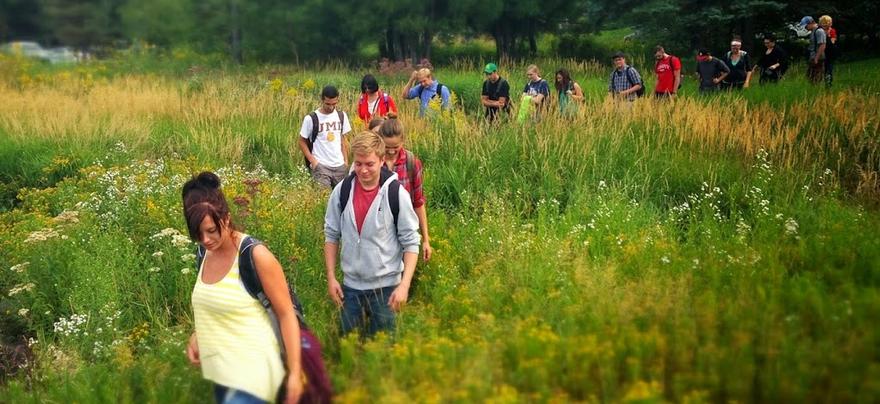
We collectively acknowledge that the University of Minnesota Duluth is located on the traditional, ancestral, and contemporary lands of Indigenous people. To read the full Land Acknowledgment, click here.
UMD takes seriously the stewardship of the land upon which campus sits. To this end, UMD uses many different land management practices to maintain and regenerate the land and protect the waters that are impacted by it.
Stormwater Management
Stormwater runoff is water from rain or melting snow and ice that flows over land and impervious surfaces such as paved streets, parking lots, building rooftops, and compacted construction sites before entering local water bodies.
It can accumulate litter, soil and plant debris, lawn fertilizers, oils, pet waste, and other pollutants that can adversely affect water quality. The UMD campus has a variety of stormwater features that serve to clean, cool, and slow stormwater down before it hits the storm drains that lead to our local streams and Lake Superior. Examples of stormwater features are rain gardens, native plantings, and retention ponds.
A map of UMD stormwater features can be found here.
Pollinator Pledge
UMD is committed to an operational policy that:
- Maintains pollinator-friendly practices in plantings and pesticide use
- Avoids the use of pesticides, including neonicotinoids, except for threats to forestry and other University property
- Continues planting seeds and native plants that enhance habitat for native and nonnative pollinators
Schedule a presentation or tour of campus sustainability today!